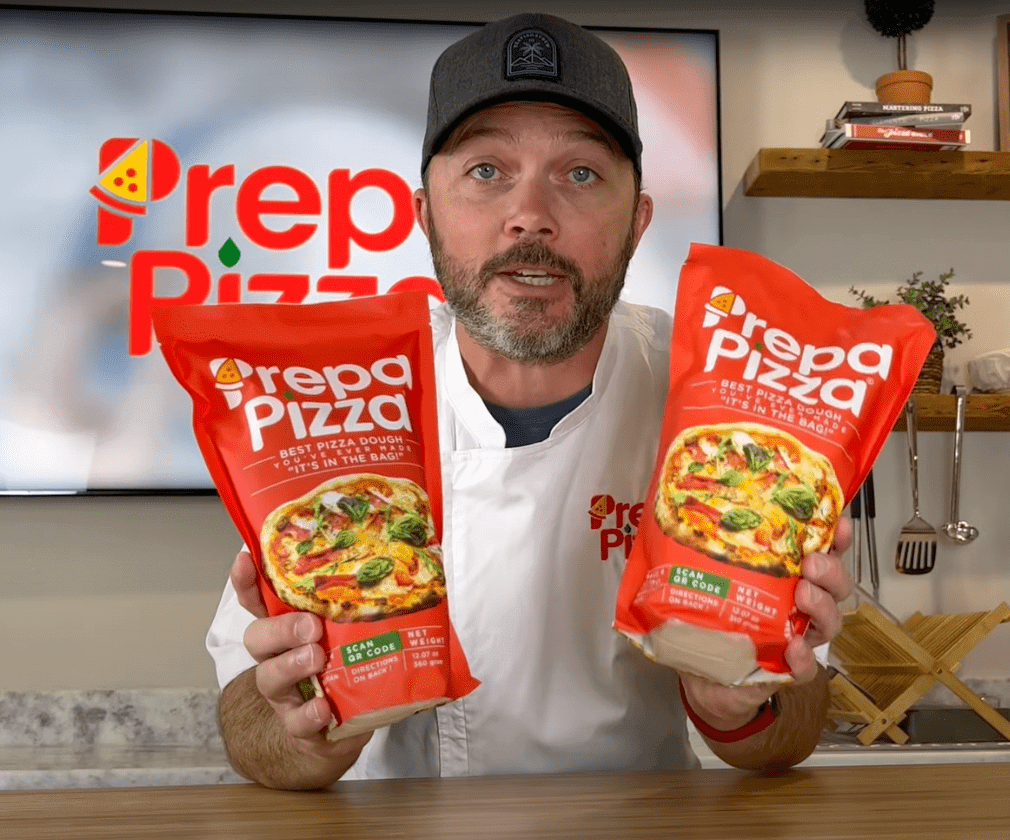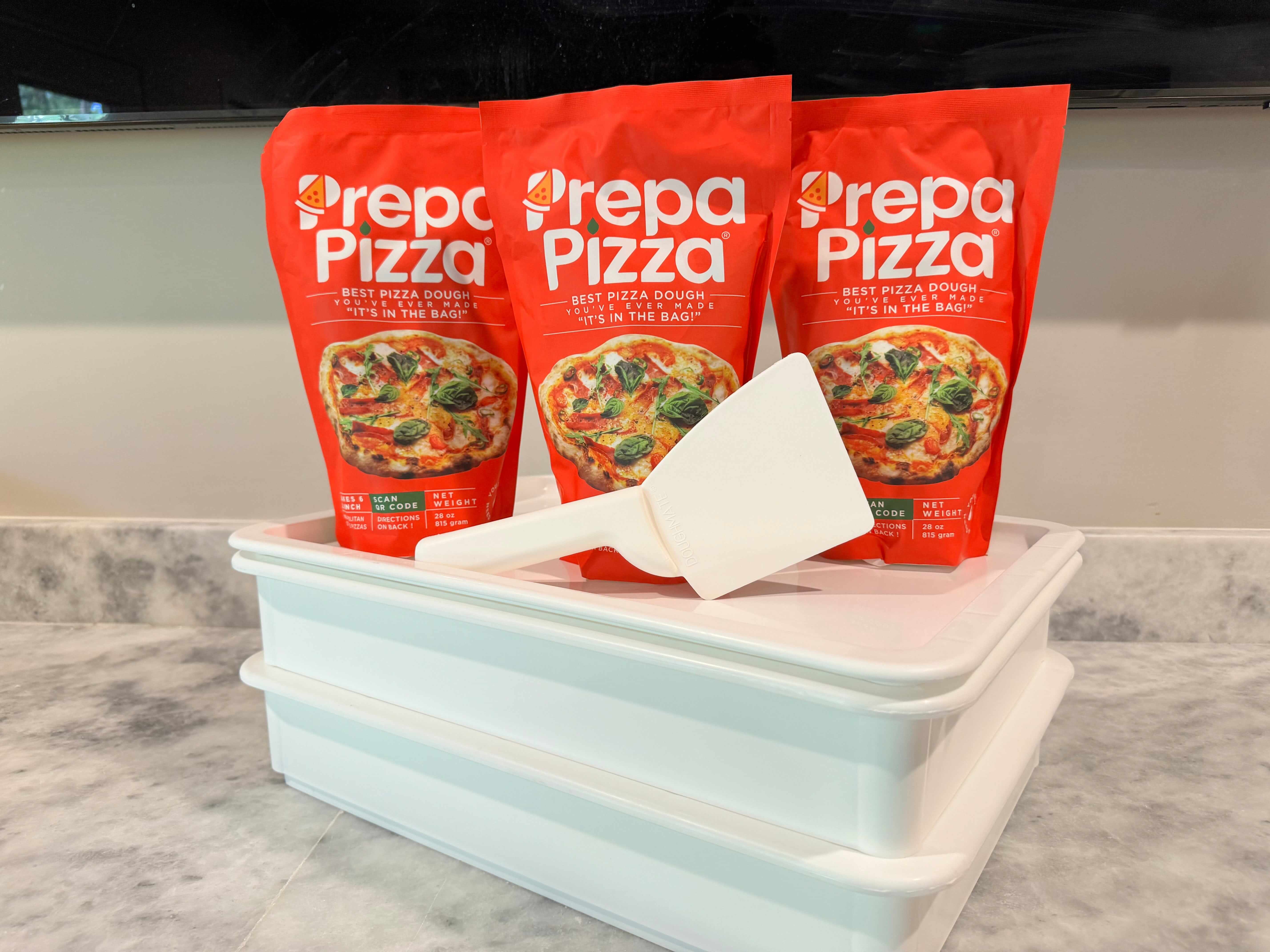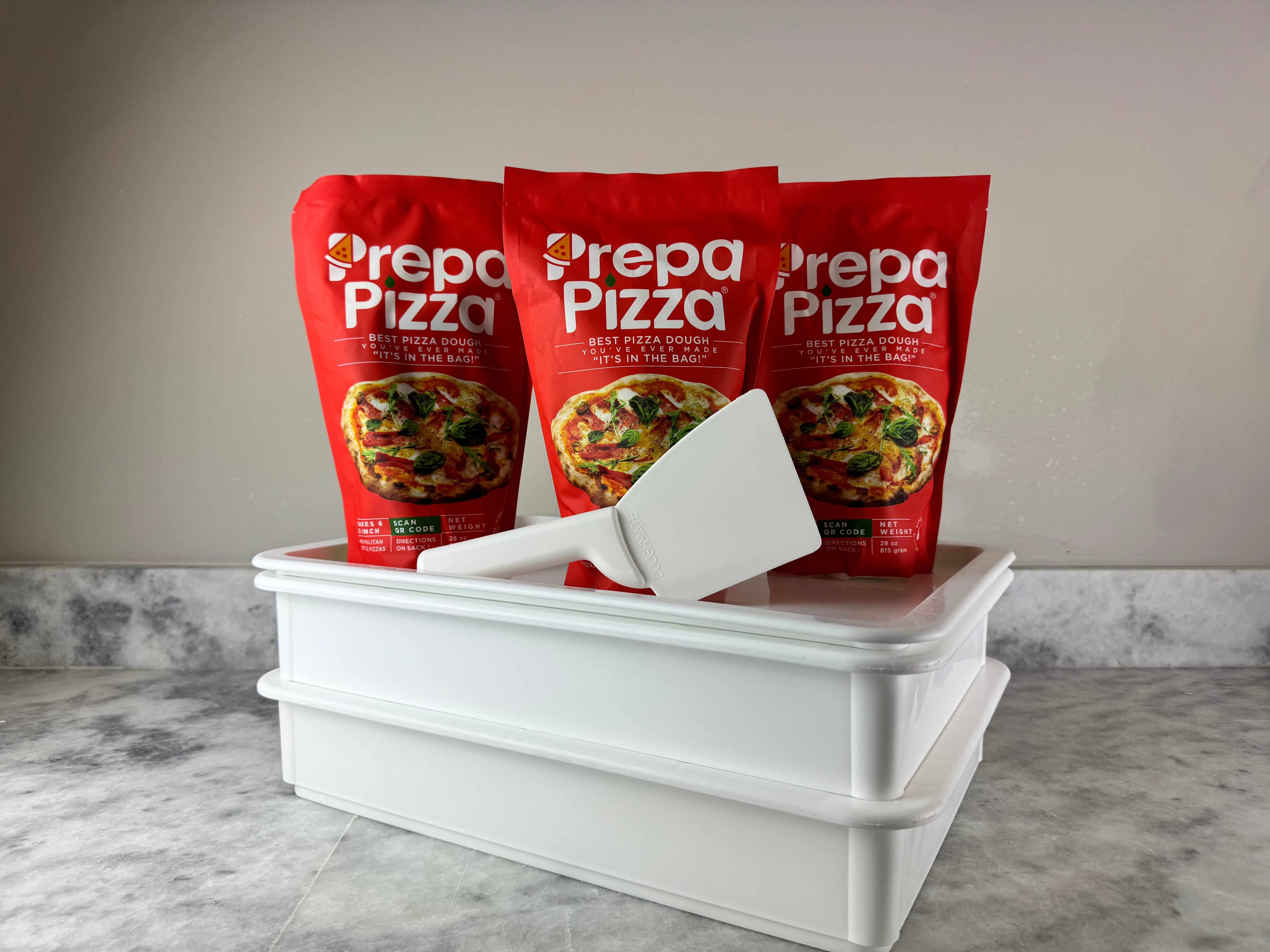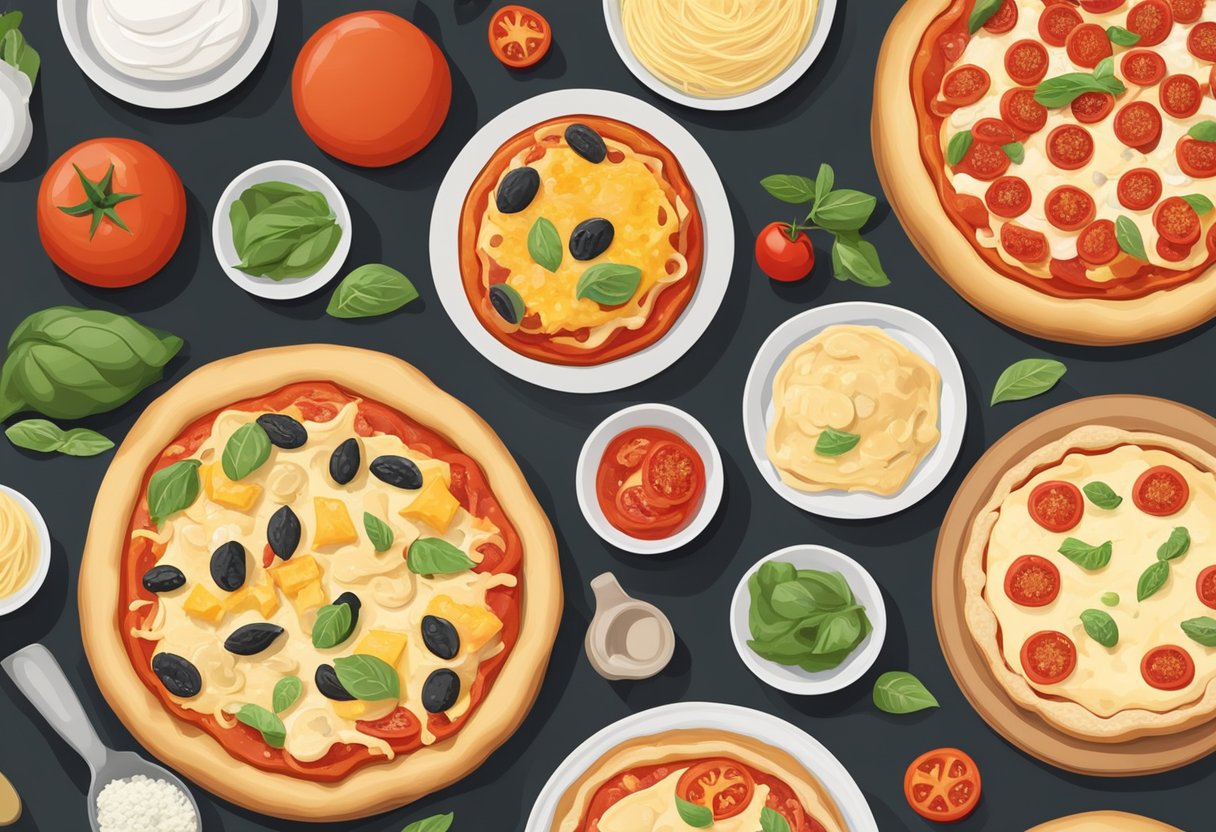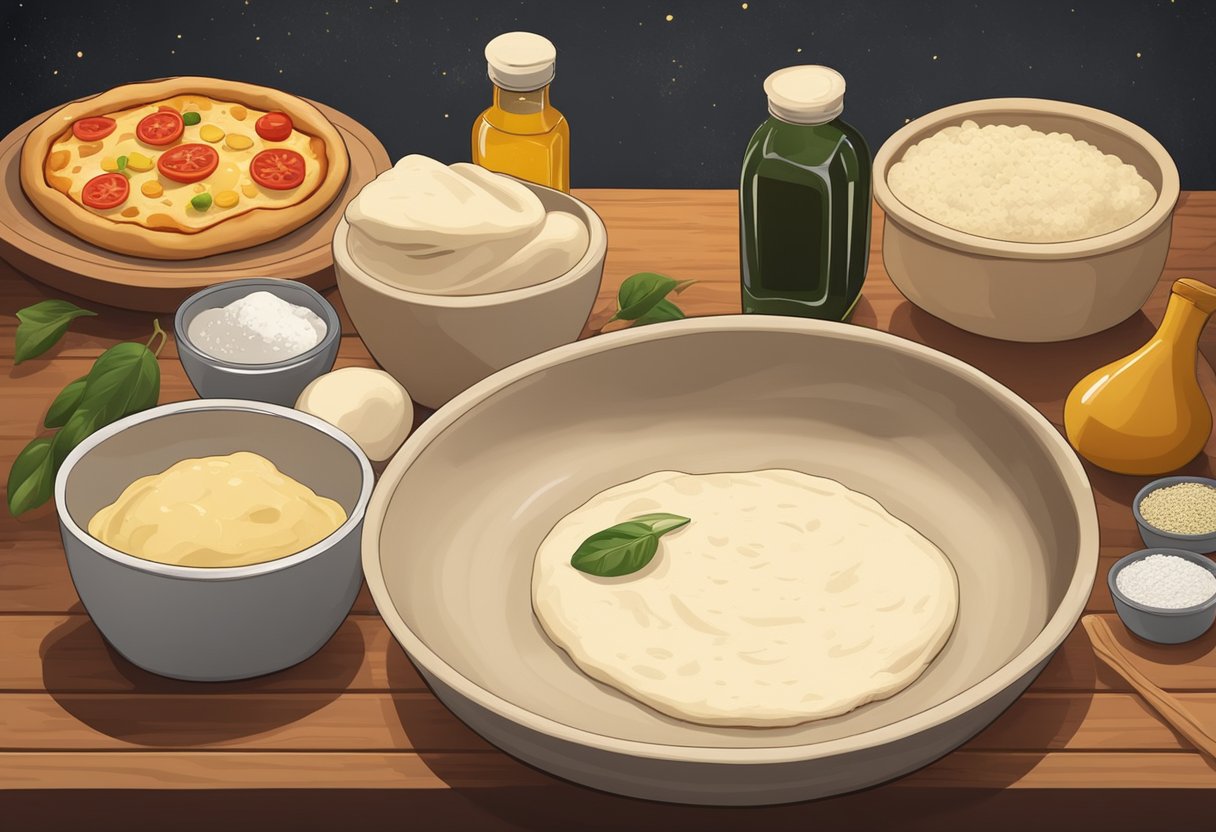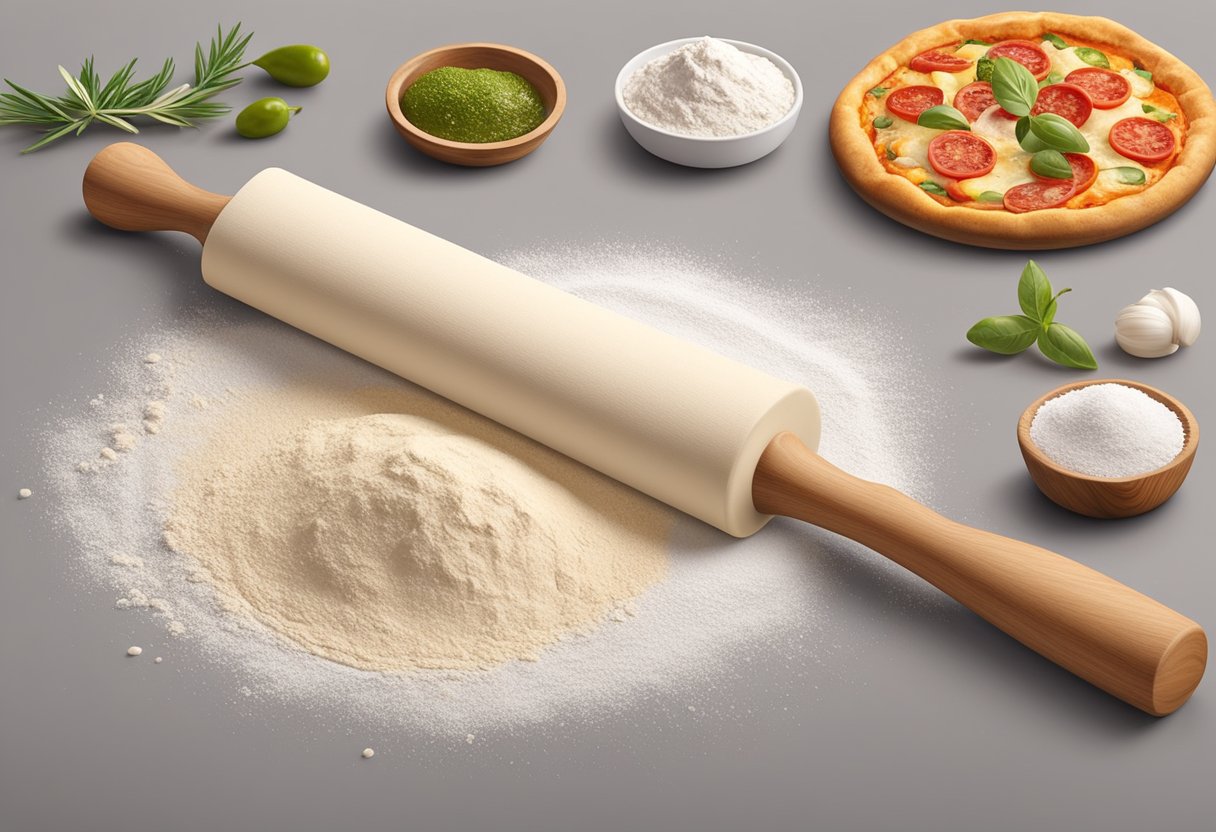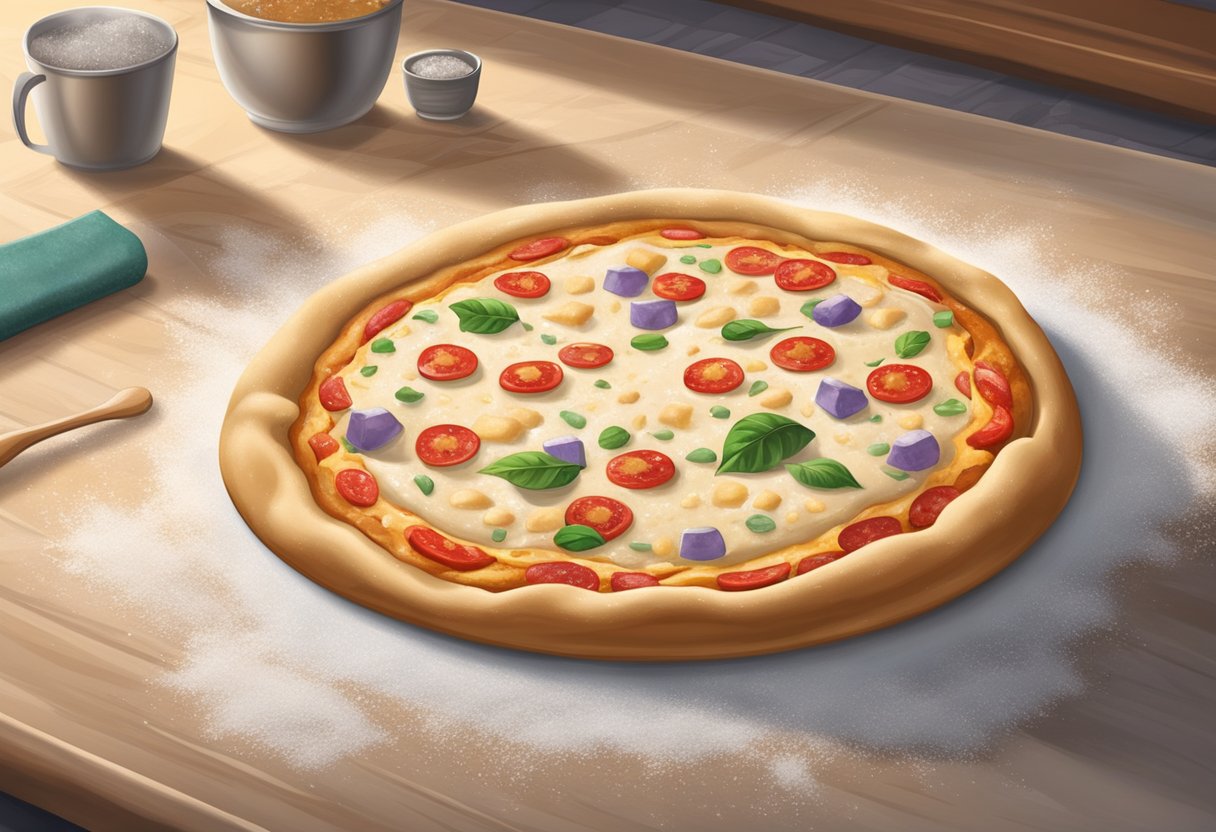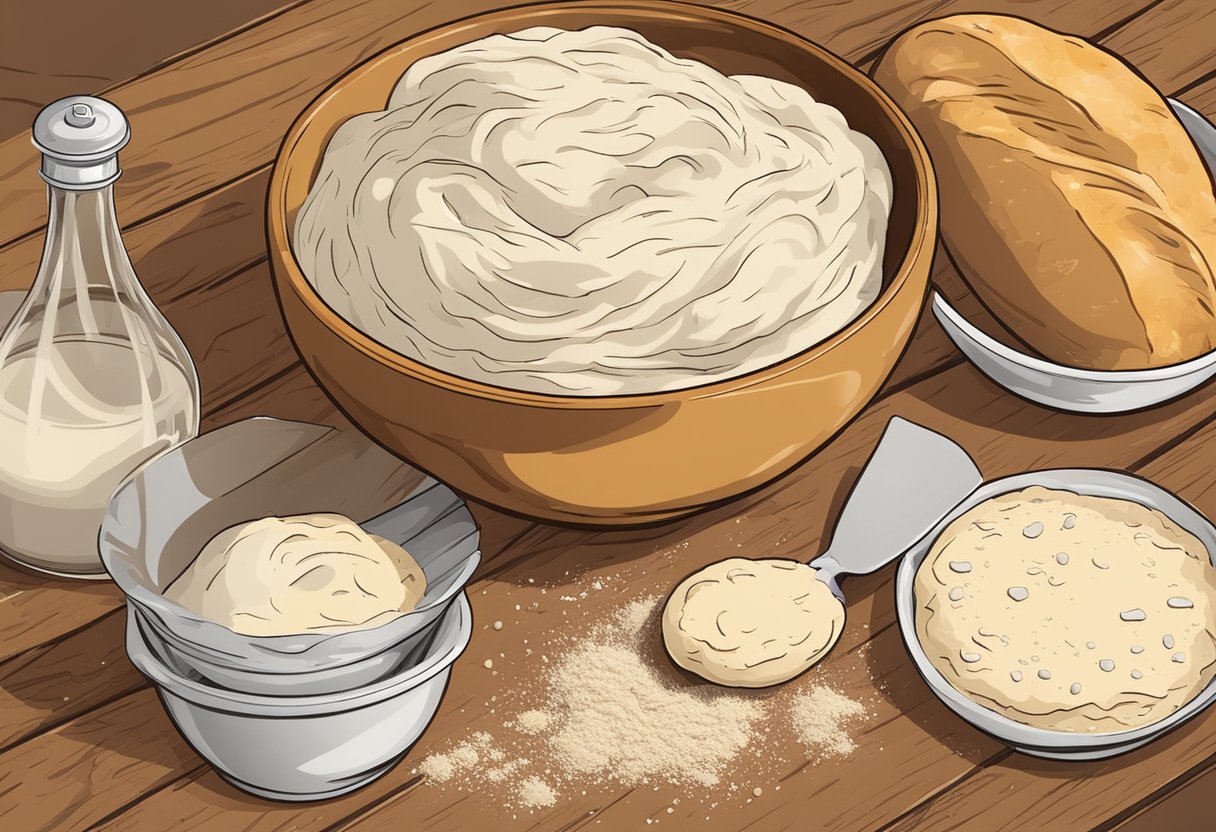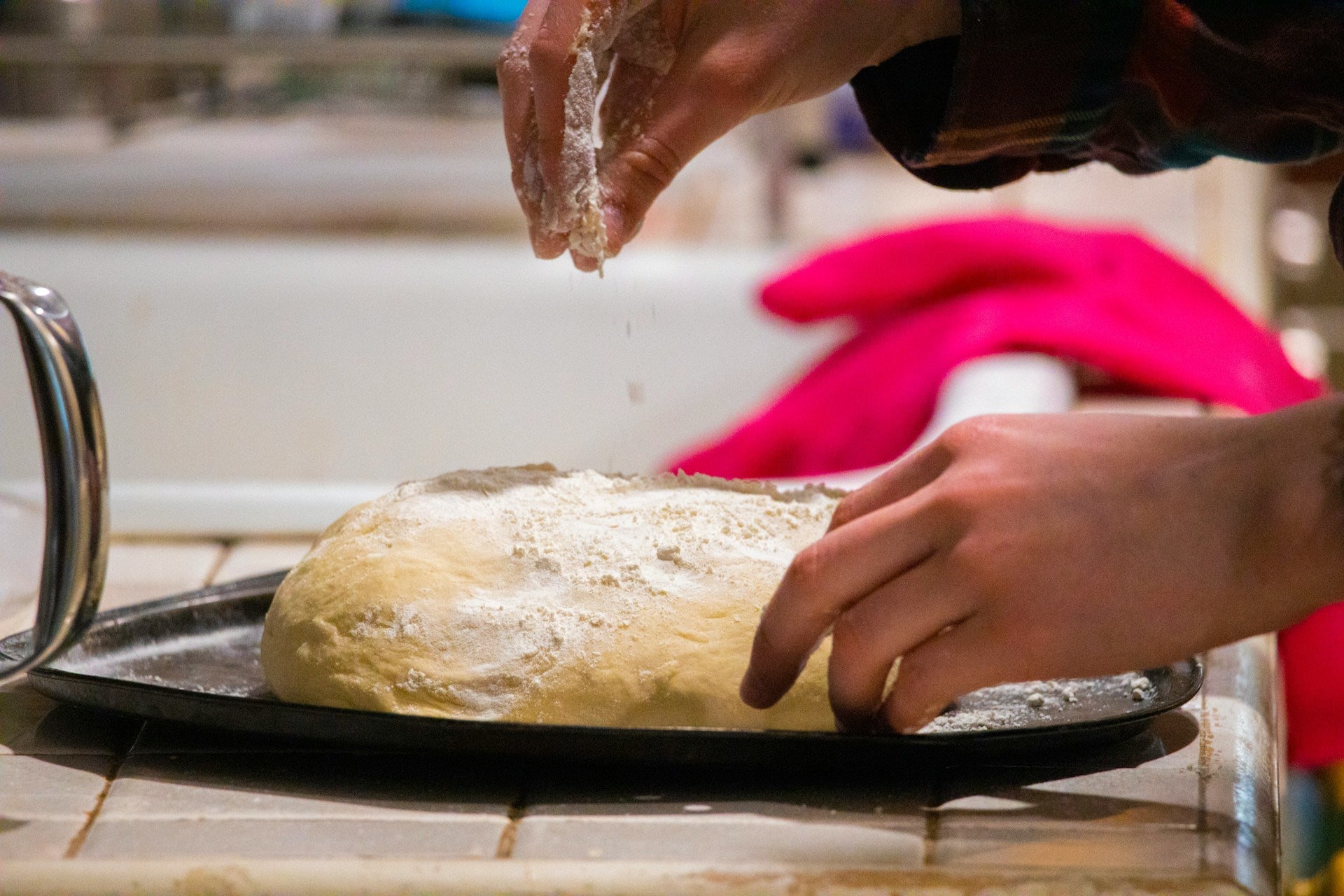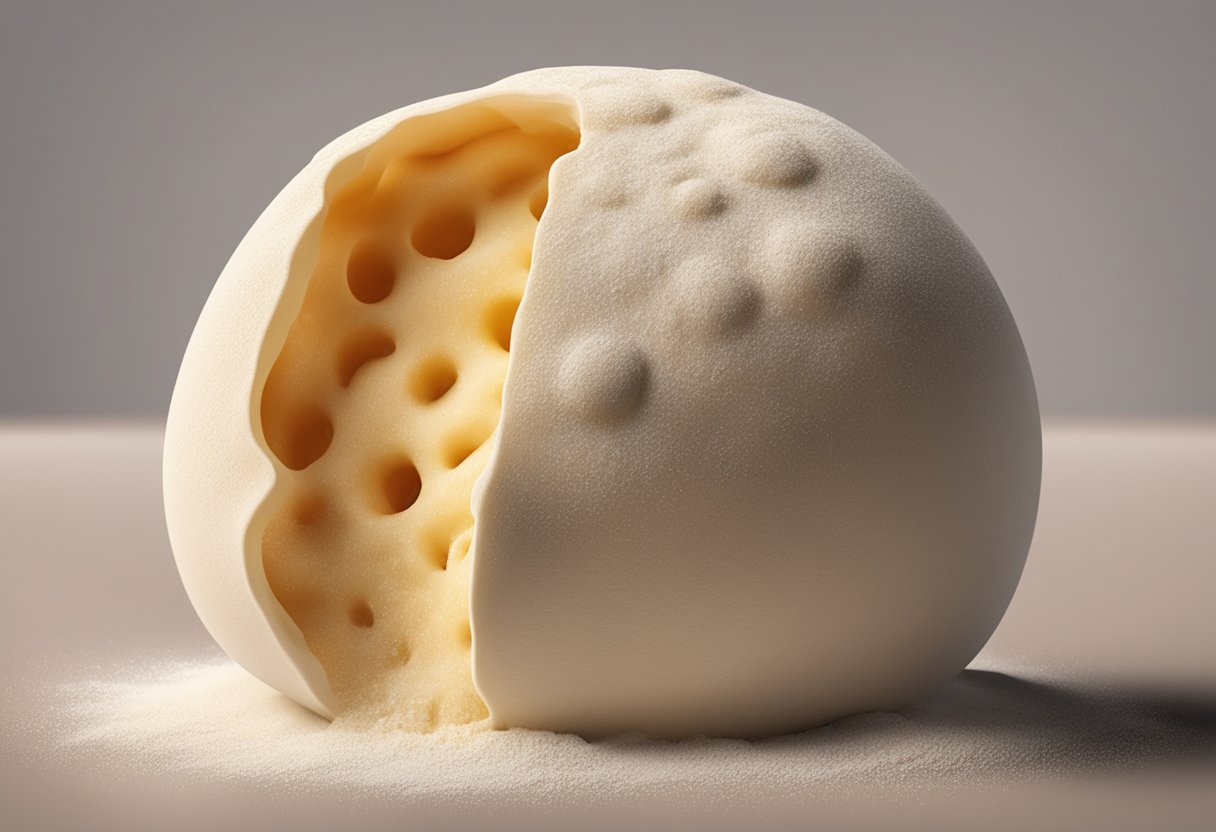
What Does Uncooked Pizza Dough Look Like? A Visual Guide to Identifying Fresh Dough
When you're preparing to make pizza, understanding the characteristics of uncooked dough is essential. Uncooked pizza dough typically appears pale, slightly sticky, and smooth to the touch, lacking any significant browning or firmness. Recognizing these traits can help you ensure that your dough is just right before it hits the oven.
In your kitchen, uncooked dough may also show signs like bubbles forming on the surface, indicating that it’s in the process of rising. If you’ve chosen to use premium quality dough like that from Prepa Pizza, you can expect a perfect texture that allows for easy handling and shaping. The appearance of your dough directly influences the final product, so knowing what to look for will elevate your pizza experience.
Understanding these visual cues can help prevent mishaps when baking. By familiarizing yourself with how uncooked pizza dough looks, you set yourself up for pizza success, enjoying the delicious results that come from using high-quality ingredients.
Characteristics of Uncooked Pizza Dough
Recognizing the characteristics of uncooked pizza dough is essential for ensuring a successful cooking outcome. Key aspects include texture and consistency, as well as color and appearance.
Texture and Consistency
Uncooked pizza dough has a specific texture that distinguishes it from fully cooked pizza. You will notice that it is soft and pliable, allowing you to stretch it without tearing. When you handle it, the dough feels slightly sticky, especially if you’ve used olive oil in the preparation process.
A well-made dough made from all-purpose or bread flour will be elastic. This elasticity is important, as it helps the dough hold its shape during baking. If the dough seems overly wet, it may be under-kneaded, while a dry, crumbly texture indicates it may be over-kneaded. The ideal consistency is smooth, but not too sticky.
Color and Appearance
The color of uncooked pizza dough can range from off-white to light tan, depending on the type of flour you’ve used. All-purpose flour tends to create a lighter dough, while bread flour gives a more golden hue as it absorbs moisture differently.
You’ll also observe a slight shine if you’ve incorporated olive oil. This sheen signifies that the gluten has been properly developed. Look for a smooth surface without cracks or dry spots, as these indicate improper moisture levels. A good dough will have an even, consistent appearance without variations in color.
Ingredients and Their Roles
The quality and type of ingredients you use directly influence the texture and flavor of your pizza dough. Understanding these components helps you achieve the perfect crust. Here’s a detailed look at each ingredient's role.
Flour Types and Choices
Choosing the right flour is critical for your pizza. All-purpose flour is versatile and works for a softer crust, while bread flour contains more protein, providing a chewier texture. For a traditional Neapolitan pizza, consider using 00 flour, which is finely milled.
When you use high-protein flour, the dough develops gluten. This gives it structure and elasticity. It’s important to consider your desired crust texture: thicker dough benefits from bread flour, while a thin crust shines with all-purpose flour.
Hydration and Yeast Activation
Water plays a vital role in dough preparation. Warm water between 105°F and 115°F helps activate instant yeast effectively. It’s essential to maintain the right water-to-flour ratio for optimal hydration, usually around 60-65%. Proper hydration results in a dough that’s easier to shape and results in a light, airy crust once baked.
When combining yeast and water, ensure the yeast is fully dissolved before mixing with flour. This will help in achieving an even rise and a beautiful texture in your finished pizza. If using Prepa Pizza dough, you can rely on expert ratios for perfect hydration.
Fats and Flavor Enhancers
Adding fats like olive oil not only enhances flavor but also affects the dough’s texture. A small amount helps keep the crust tender while preventing it from becoming tough. Generally, 1-2 tablespoons per batch of dough is ideal.
You can also consider adding a bit of sugar to activate yeast and enhance browning during baking. Using these elements creatively can lead to a more flavorful crust. With Prepa Pizza, you benefit from the right balance of fats and enhancers, ensuring a restaurant-quality dough perfect for any topping.
The Kneading Process
Kneading dough is essential for developing gluten, which gives your pizza crust its structure and texture. Proper techniques can significantly influence the final result and ensure a well-cooked and enjoyable pizza.
Techniques for Kneading Dough
To knead dough effectively, you can use both hand and machine methods. When kneading by hand, place the dough on a lightly floured surface. Push the dough away with the heels of your hands, fold it over itself, and rotate. Repeat this process for about 8-10 minutes until the dough is smooth and elastic.
If using a stand mixer, attach the dough hook and mix on a low speed. Gradually increase the speed, kneading for about 5-7 minutes. The dough should pull away from the bowl's sides and have a slightly tacky texture.
Using Prepa Pizza dough simplifies this process, as it is already crafted to be easily kneaded and provides the perfect starting point for your pizza creations.
Gluten Development
Gluten development is crucial for achieving a chewy and well-structured crust. As you knead, proteins in the flour combine with water, forming gluten strands. This process begins as soon as you start mixing the ingredients, but effective kneading enhances the gluten network.
You should be able to stretch the dough without it tearing, which indicates good gluten formation. If you see a windowpane effect—where the dough becomes translucent when stretched—this means you have developed gluten sufficiently.
With Prepa Pizza dough, you can expect excellent gluten development right out of the package, helping you create a pizza crust that holds up to toppings and cooking.
Preparing Pizza Dough for Baking
When you're ready to bake your pizza, proper preparation of the dough is essential. This involves shaping the crust and allowing it to proof, ensuring a flavorful and well-textured finished product.
Shaping the Pizza Crust
Start by lightly flouring your workspace. Use a rolling pin to gently stretch your Prepa Pizza dough. If you prefer a thin crust, aim for a thickness of about ¼ inch. Be careful not to overwork the dough, as this can make it tough.
As you shape, use your hands to form the edges. This helps create a raised crust for those delicious toppings. You can also use a pizza peel dusted with cornmeal to make transferring your pizza easier.
If you have a pizza stone, preheat it in the oven to achieve a crispy bottom. Make sure your pizza peel is ready to go, so you can slide the formed crust directly onto the hot stone.
Proofing the Dough
After shaping, allow the dough to proof for about 30 minutes. This step is critical for achieving that light, airy texture. Place the dough on a parchment paper-lined tray, covering it with a clean kitchen towel to retain moisture.
During proofing, the yeast will continue to work, creating bubbles within the dough. This process is vital for flavor development as well.
Check the dough; it should puff up slightly. If it doesn’t, you may need to give it more time. Once adequately proofed, your Prepa Pizza dough is ready for toppings and baking.
Additional Pizza Making Equipment and Tips
When making pizza, having the right equipment enhances your cooking experience. The choice of tools impacts how well your pizza cooks and how easily you handle the dough.
Using a Pizza Stone or Baking Sheet
A pizza stone is designed to absorb moisture, resulting in a crispy crust. Preheat the stone in the oven for at least 30 minutes before placing your pizza on it. This ensures even heat distribution.
To work with a pizza stone, lightly dust it with cornmeal to prevent sticking. This allows for easy sliding of the pizza onto the stone. If you don't have a pizza stone, a baking sheet can serve as a substitute. Line the baking sheet with parchment paper for easier cleanup and to prevent sticking. Whichever you choose, preheating is crucial for achieving that perfect crust.
Transferring Dough With a Pizza Peel
Using a pizza peel makes transferring your pizza effortless. Before placing your dough on the peel, sprinkle it with cornmeal to avoid sticking. This acts as tiny ball bearings, allowing the pizza to slide off smoothly.
Once your pizza is assembled, position it at the edge of the peel and give it a gentle shake. This ensures it's not stuck. With a swift back-and-forth motion, transfer your pizza onto the hot stone or baking sheet. Having a well-prepared peel saves you from potential mess and helps maintain the shape of your pizza as it goes into the oven.
Frequently Asked Questions
Understanding the characteristics of uncooked pizza dough is crucial for achieving the perfect bake. You may have specific inquiries regarding how to identify raw dough and the implications of consuming undercooked pizza.
How can you identify if your pizza dough is still raw?
Raw pizza dough typically appears pale and lacks the golden-brown color that comes from proper baking. If the dough feels soft and gummy when you touch it, that's a clear indication that it hasn’t fully cooked.
What are the indicators of undercooked pizza dough?
You can look for several signs to determine if your pizza dough is undercooked. A gum line, or layer of uncooked dough, forms inside the crust. Additionally, if the crust is pale or doughy instead of crispy, it's likely not done.
Is it safe to consume pizza that has been undercooked?
Eating undercooked pizza can pose health risks, primarily due to the raw dough containing flour and yeast. These ingredients can harbor harmful bacteria. It’s best to ensure your pizza is thoroughly cooked before consuming.
How can you correct pizza dough that hasn't fully cooked?
If you find that your pizza is undercooked, return it to the oven. Keep it at a high temperature and check the dough periodically until it achieves a crispy texture. This method can rescue your pizza and enhance its quality.
What are the risks of eating undercooked pizza dough while pregnant?
For pregnant individuals, consuming undercooked pizza dough raises concerns regarding foodborne pathogens that can affect both mother and fetus. It's crucial to avoid any raw or undercooked ingredients to ensure health and safety during pregnancy.
What does spoiled pizza dough look like and how can you tell?
Spoiled pizza dough may present a grayish color, indicating past its prime. You might also notice an off smell or visible signs of mold. Always inspect dough for any unusual appearance or odor before use to ensure safety.




